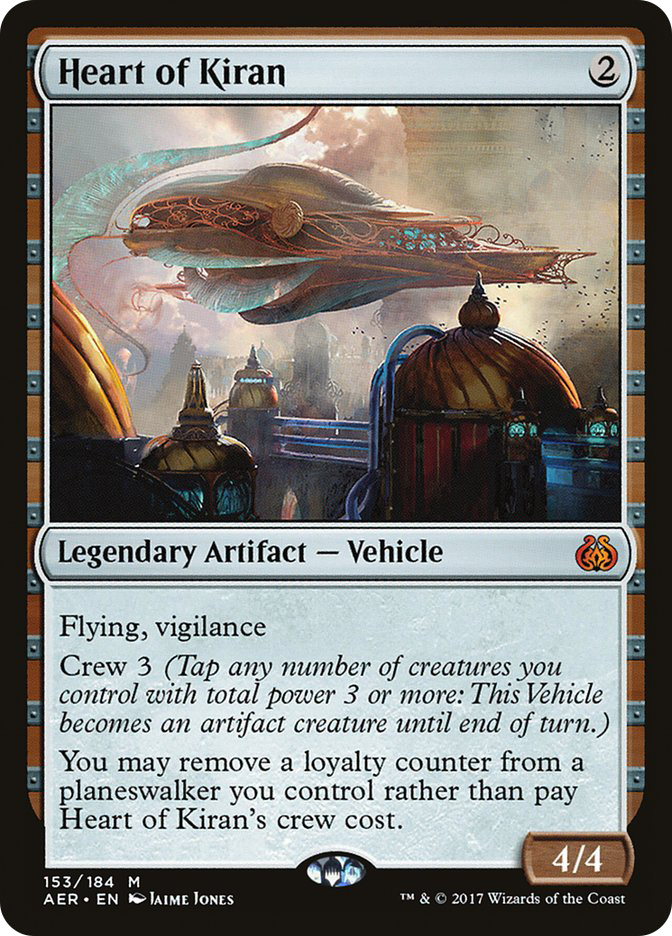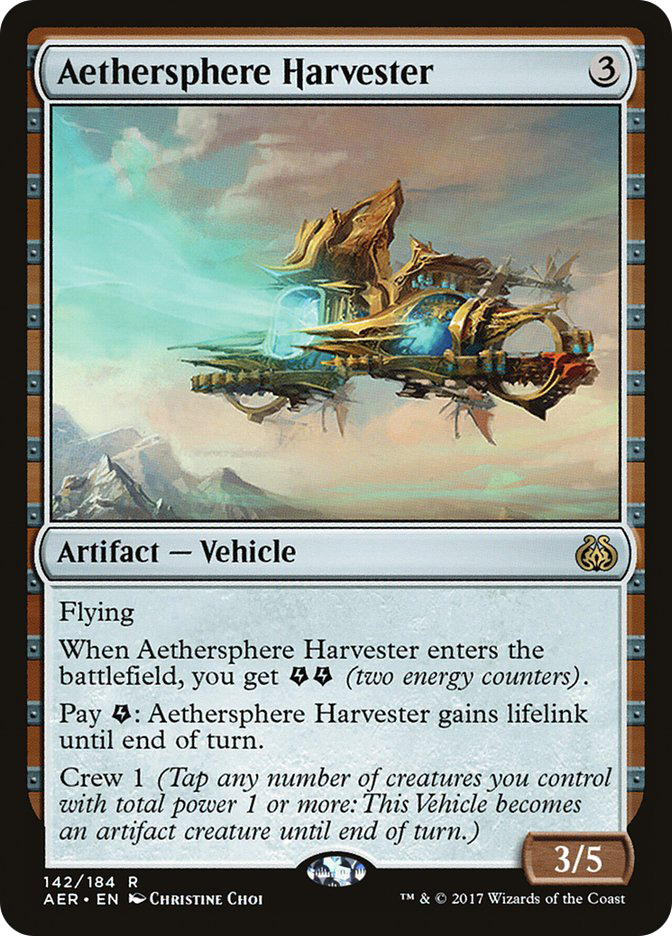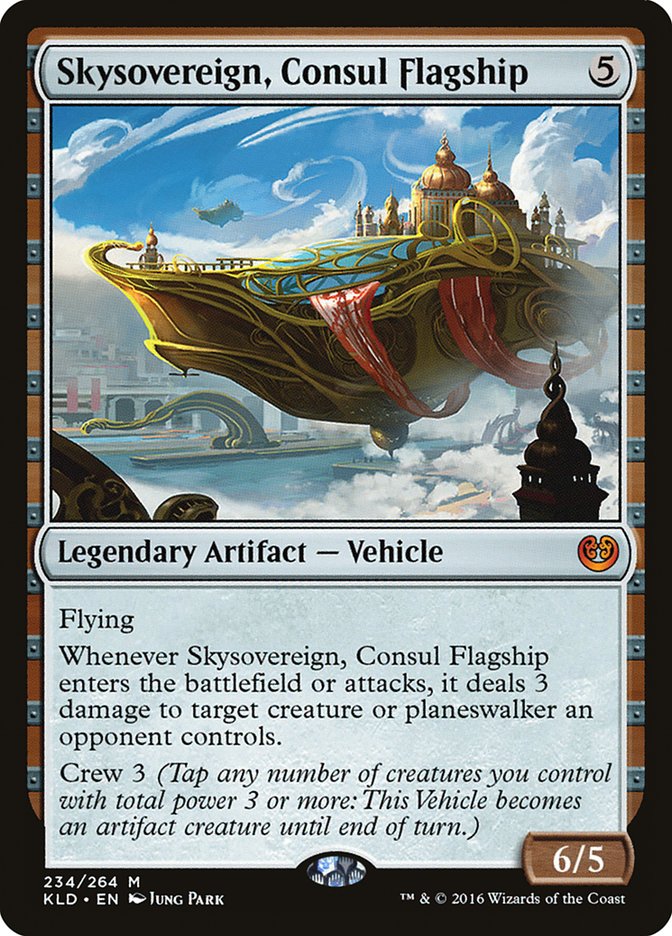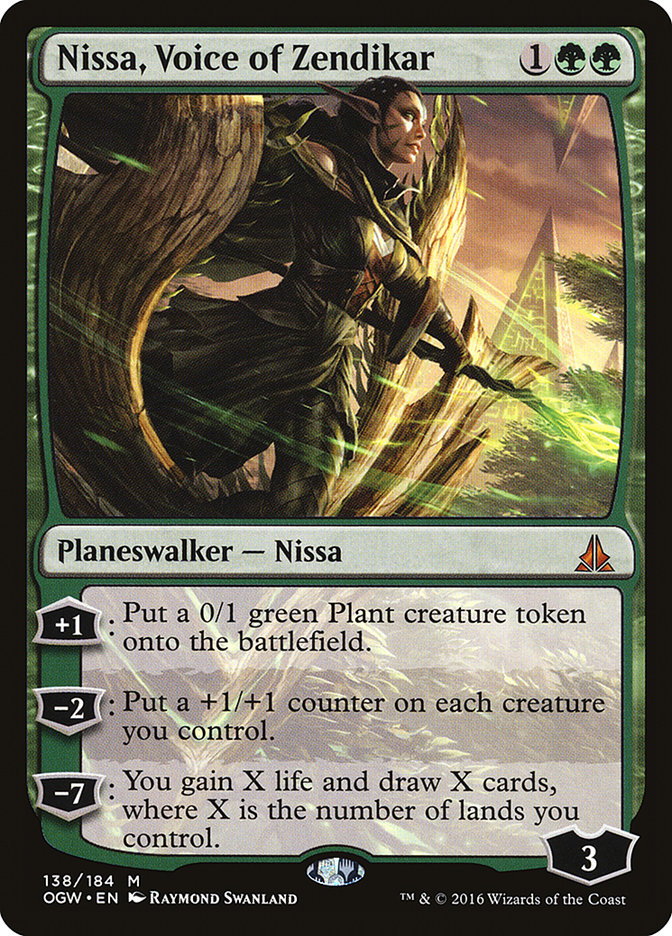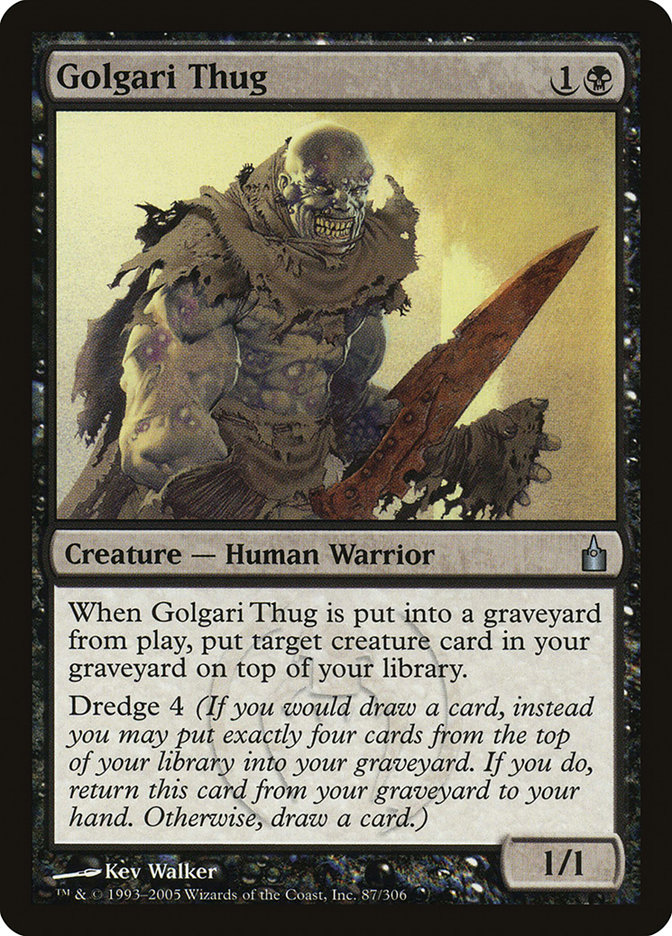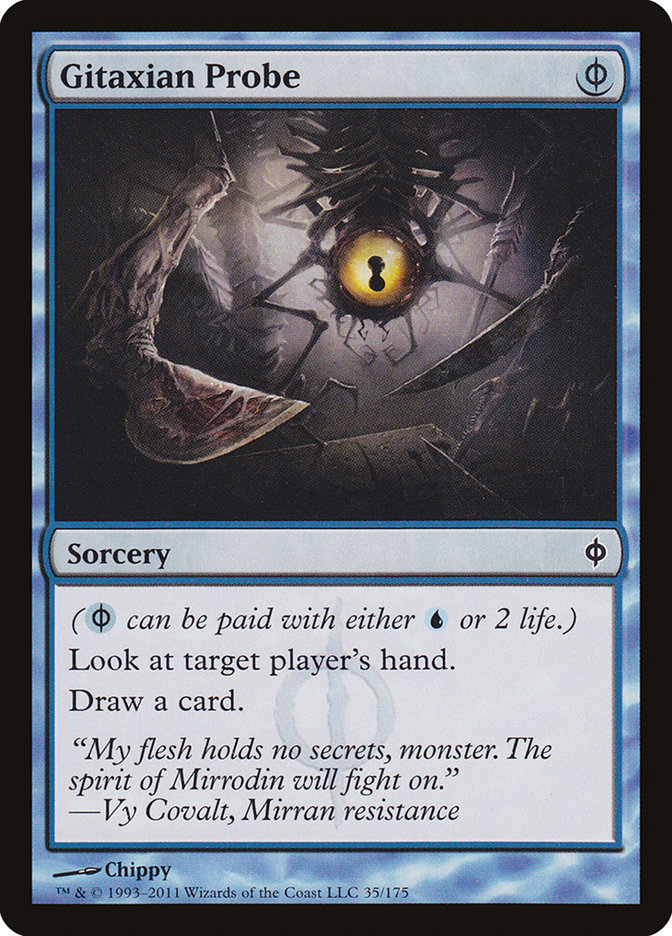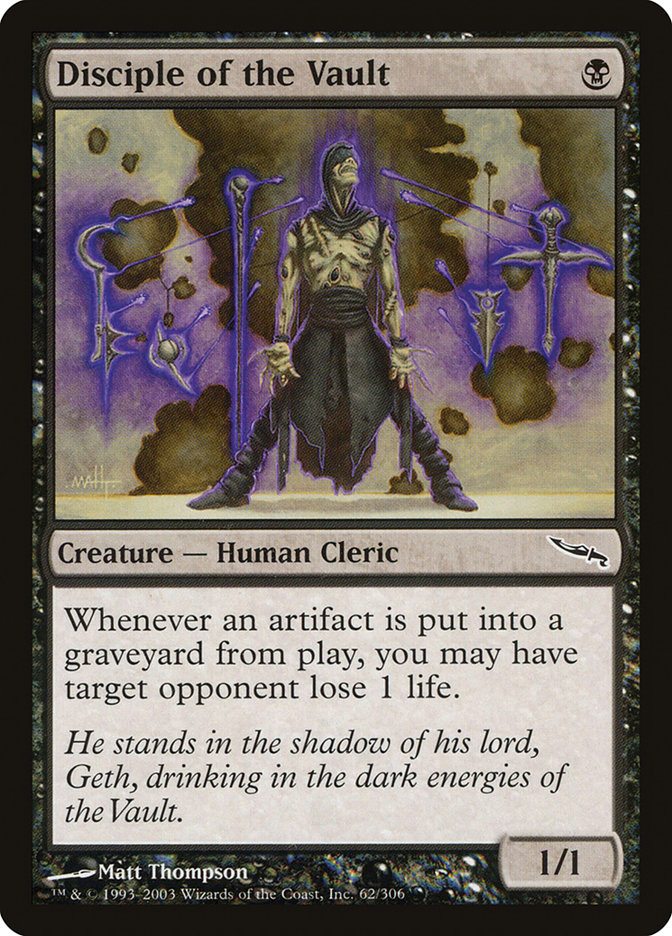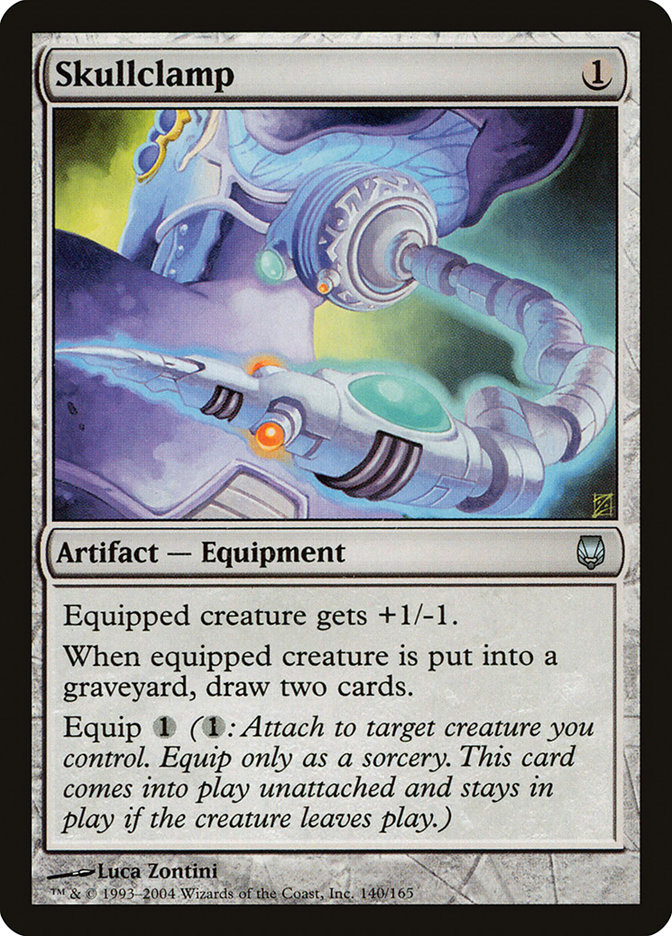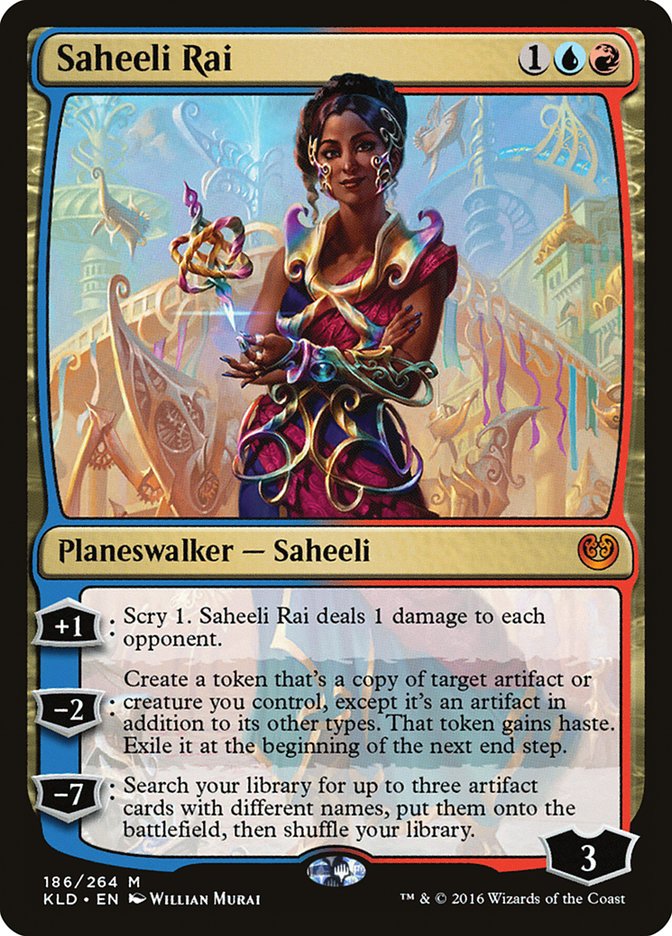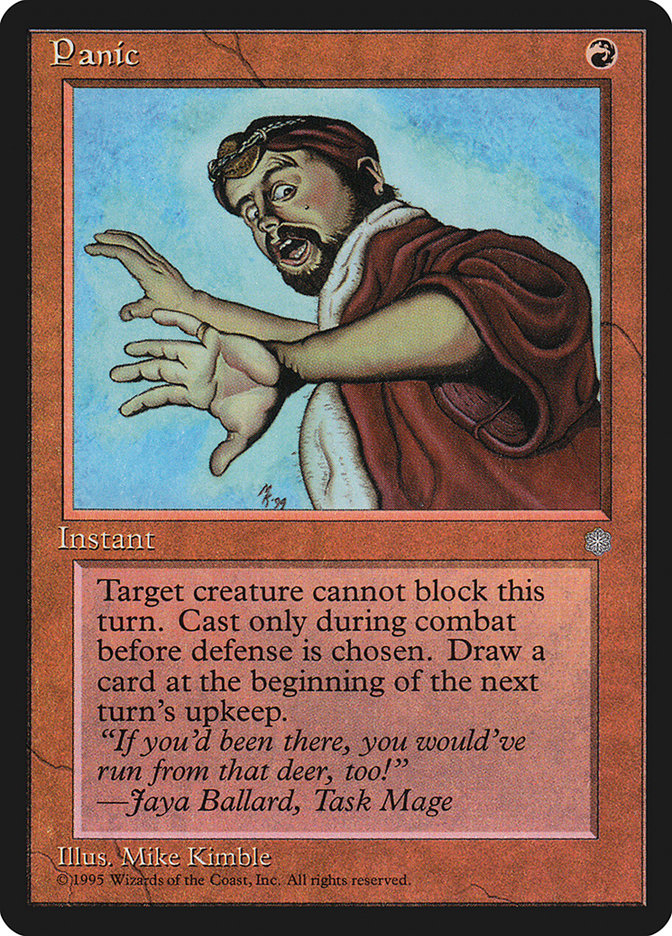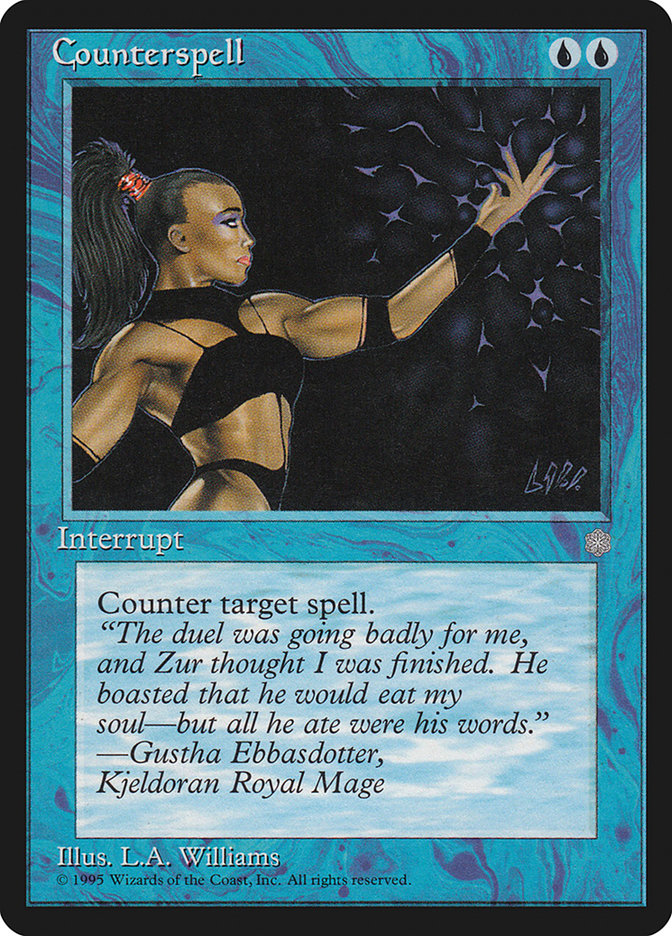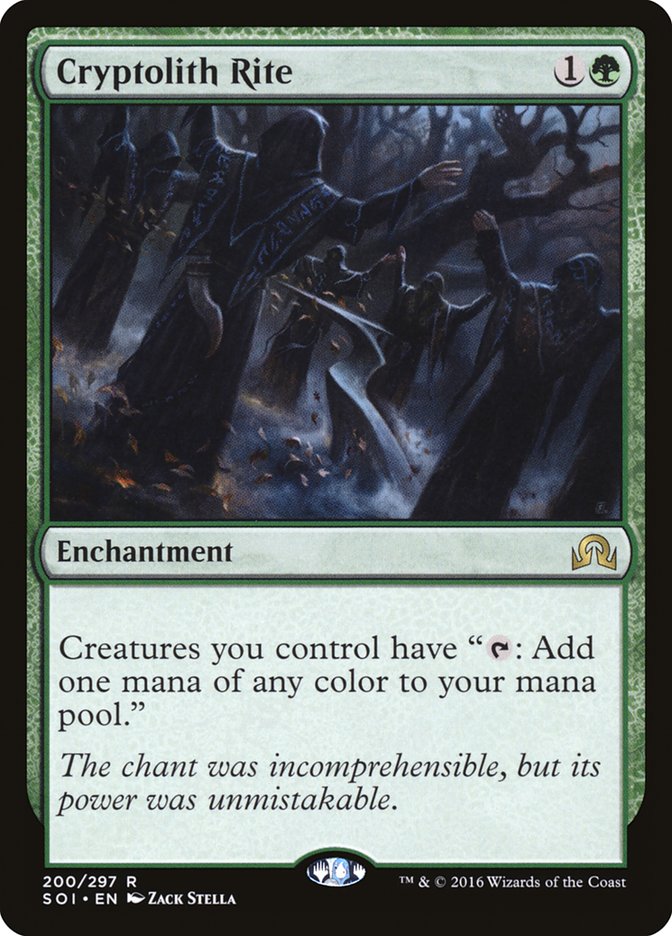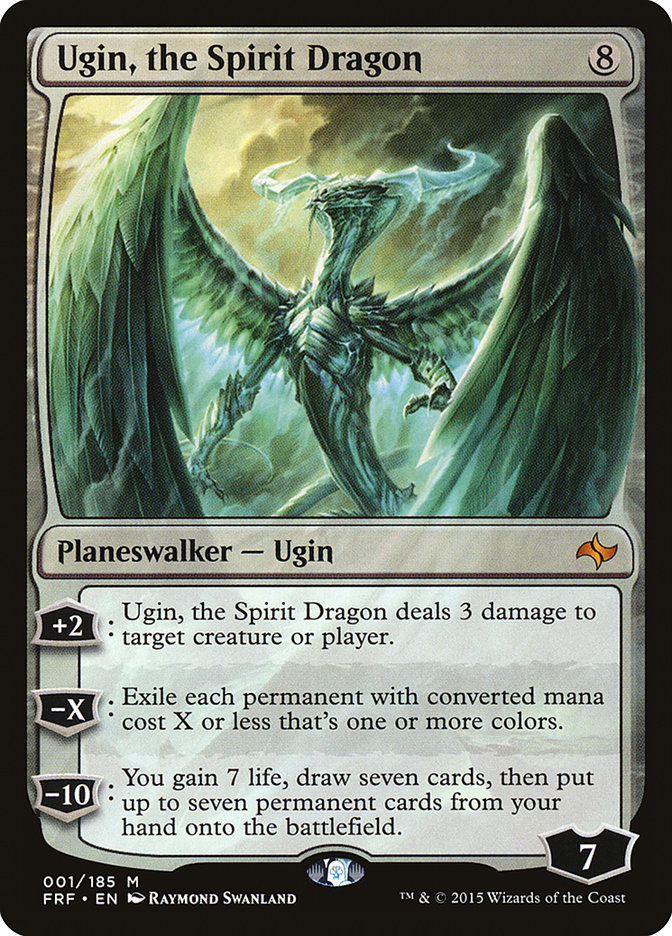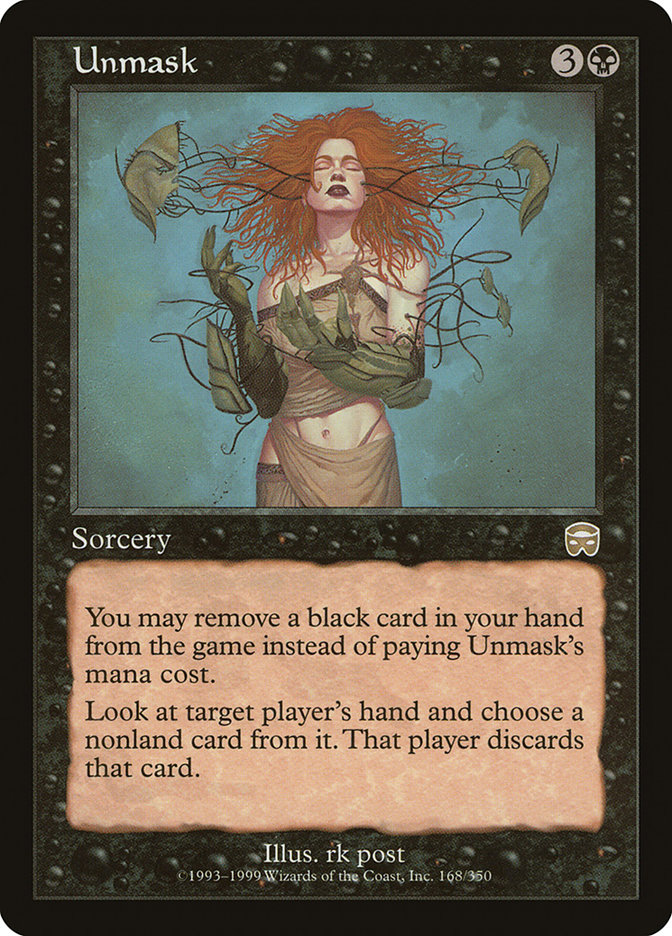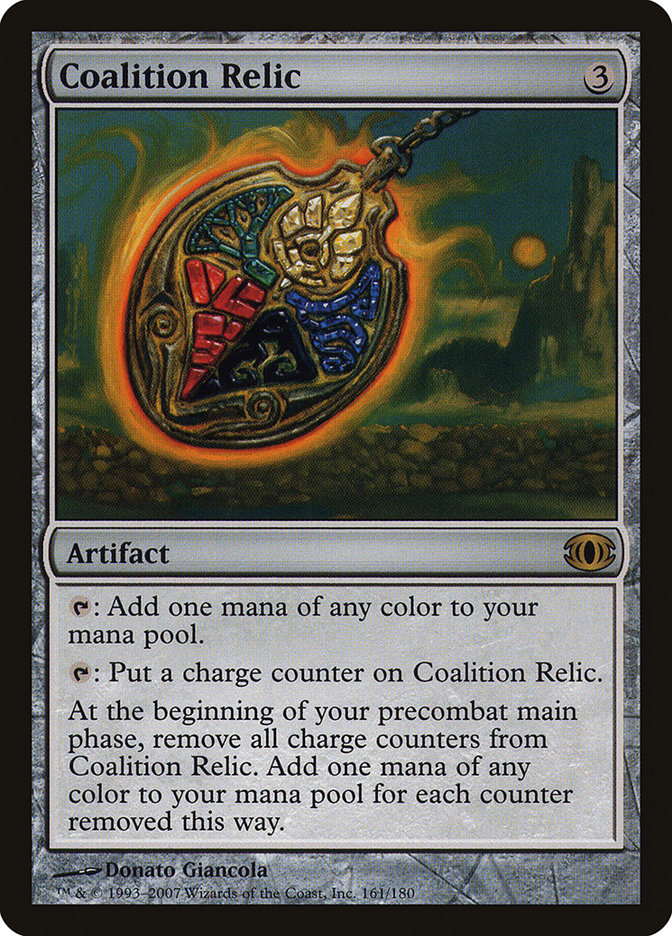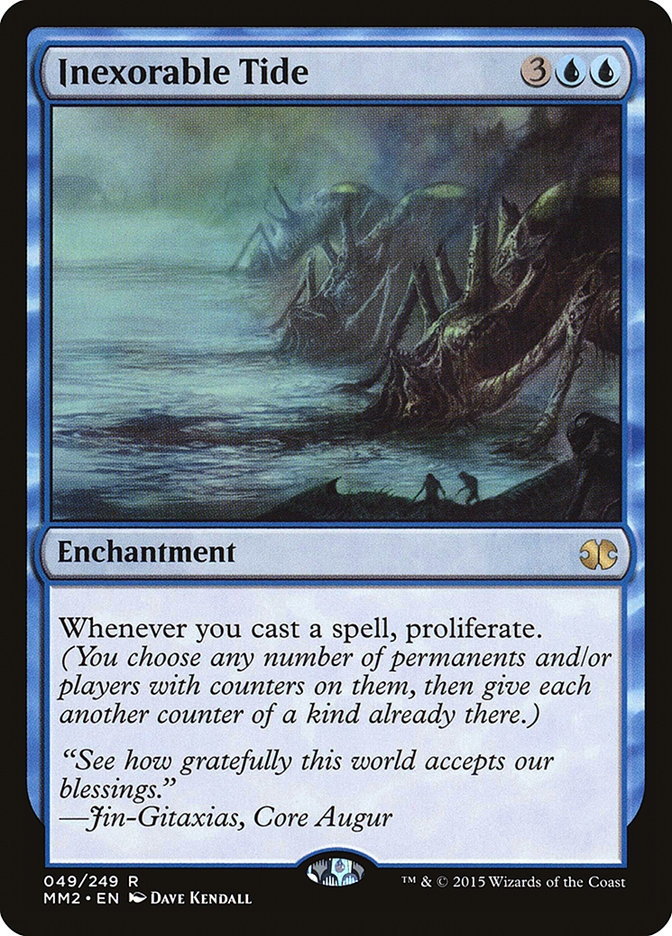It’s been a full week, and you’ve no doubt read a dozen different articles about the shocking bans that WotC dropped on us last Monday. I, for one, am pretty thrilled—there’s nothing worse than spending a lot of mental energy on a boring Standard format where the same two or three cards show up in every single deck.
That being said, I have a lot of sympathy for anyone who lost a big chunk of their collection’s value last week. As an established player, a healthy and vibrant Standard format is far more important to me than any one or two cards in my collection. But if you’re a new player living through your first major ban or a young player who saved up for weeks in order to buy a playset of cards that you can no longer use, I feel you. Part of my goal in this column is to help you manage your collection in such a way that that these sorts of unexpected losses won’t affect your bottom line as much.
For the record, I did not see this coming. If I had, I wouldn’t have recommended that you go out and buy playsets of Smuggler’s Copter and Emrakul, the Promised End so many times over the past few months. I’m not embarrassed to admit I made that recommendation, though – there was no precedent for those cards to be banned, and they would have dominated Standard throughout 2017 had they remained legal. That’s why WotC decided to ban them. My results were poor, but my process was sound.
At any rate, we’ve got two big ban-related topics to cover today. First, we’re going to look at the bans on a micro level: what do they mean for the current Standard format and the state of Modern? What cards are likely to see more play in the near future, and what cards might be pushed to the sidelines? Also, what should you do with your banned cards: dump them now, or keep them on the off-chance that they’ll be relevant again?
Second, I’m going to look at these bans on a macro level. This is clearly not business as usual for WotC, so what does this mean for the future of Standard? Has WotC started to take a more aggressive stance on banning cards, or is this a once-every-five-years anomaly? Have the risks of Standard speculation changed, and are there any new opportunities we should be considering?
So grab your ban hammer, make sure you have a Reflector Mage or two on hand to dry your tears with, and read on. It’s time to talk about the future of Standard.
The Small Picture
Imagine that you’re shopping for a car. The dealership has several dozen interesting models, but there are two that really stand out: a big, roomy SUV with a great safety rating and a zippy sports car with amazing handling and great gas mileage. Not only do these two cars outperform all the rest, but they’re cheaper to buy.
Now tell me this: would you look at any of the other cars on the lot? I sure wouldn’t. At that point, my only decision would be whether I wanted to drive a sports car or an SUV.
Let’s shop for Vehicles.
This is what Standard was like before the bans. Emrakul, the Promised End was the SUV, and Smuggler’s Copter was the sports car. If you needed a control finisher, you played Emrakul. If you needed an aggressive creature, you played Smuggler’s Copter. There was no reason not to do this, and it prevented similar cards from making an impact. It also prevented different cards from making an impact—after all, why would you make a deck that didn’t take advantage of one of the format’s best two cards?
Let’s start with Smuggler’s Copter. The obvious next step is to take a look at Kaladesh and Aether Revolt‘s other Vehicles for replacements. Both Heart of Kiran and Aethersphere Harvester have gained value since the bans, which is unsurprising.
I actually liked both cards at their pre-order prices before the Copter ban, and I wouldn’t be surprised if both end up making more of an impact than they otherwise would have. This also opens up more room for Skysovereign, Consul Flagship and Cultivator’s Caravan, both of which already saw a reasonable amount of play before Smuggler’s Copter went down.
I wouldn’t go too deep here, though. I suspect that the loss of Smuggler’s Copter will be fatal for the Vehicle-centric decks, and I don’t think we’ll see a lot of Depala, Pilot Exemplar or Toolcraft Exemplar in the new Standard—sell both of these cards ASAP if you have them. Aggressive strategies will find a way forward, but they might look a lot more like the R/B decks that run Scrapheap Scrounger or R/G builds that try to take advantage of Aether Revolt‘s new energy cards. All that is to say that I wouldn’t recommend buying Heart of Kiran at $25 until we see how things shake out, but I don’t expect the format to be entirely Vehicle-free.
On the other side of things, cards that died to Smuggler’s Copter have suddenly gained a tremendous amount of value. The biggest thing that Smuggler’s Copter did was to keep planeswalkers in check, and I wouldn’t be surprised if we see a lot more of them in the first part of 2017. Gideon, Ally of Zendikar is likely to take over the title of Most Annoying Card in Standard, but he won’t be the only ‘walker you’ll have to deal with. Liliana, the Last Hope and Saheeli Rai have both gained value this week, and I suspect those trends will continue.
Chandra, Flamecaller; Chandra, Torch of Defiance; and Nissa, Voice of Zendikar are all really intriguing buys as well. All three of those planeswalkers have seen marginal gains online, and their paper counterparts will likely be next. Get your copies now if you think you’ll need them.
W/U Flash was already one of the better Smuggler’s Copter decks, and the Reflector Mage ban may have pushed it out of Standard for good. At the very least, the deck will probably have to be re-imagined based on what Aether Revolt brings to the table. For example, Spell Queller plays really well with a lot of the newest set’s more controlling cards and classic counter-based strategies are much better without having Emrakul to worry about. On the other hand, Selfless Spirit isn’t nearly as good without Smuggler’s Copter to protect.
Right now, I feel like all of the cards in W/U Flash are overpriced, as people haven’t fully adjusted to the likely death of this deck. Even though I suspect that Spell Queller will find a new home, it probably won’t be worth nearly as much as it is right now. I’d sell both Spell Queller and Selfless Spirit, though I’m keeping Gideon, Ally of Zendikar (still has too many other great homes) and Archangel Avacyn (ditto).
Emrakul, the Promised End is the most interesting of the Standard bans. Ulamog, the Ceaseless Hunger has gained value over the past few days as Aetherworks Marvel players seek out their new finisher, but there is a world of difference between casting an Ulamog and casting an Emrakul. Aetherworks Marvel Combo isn’t dead, but it’s unlikely to be a Tier 1 deck going forward. Not only would I sell my Ulamogs into hype, I’d sell my Aetherworks Marvels before they tank.
It’s also unclear if B/G Delirium will survive in the new Standard. Not only did it lose Emrakul, but it probably lost its best matchup in W/U Flash. Kalitas, Traitor of Ghet gets better—almost all the aggressive cards did—but Ishkanah, Grafwidow is almost certainly worse. Is it even worth running a delirium strategy for Ishkanah by itself now that you aren’t powering out an Emrakul or facing down a bunch of Spirits? I remain skeptical, and I’m going to recommend selling Ishkanah now—it just isn’t a $10 card if Delirium isn’t Tier 1. Grim Flayer has some of the same issues, though I could see a midrange B/G deck forming that could take advantage of that card’s cheap versatility.
Overall, the biggest change to Standard is that the departure of these three cards will open up the format to a host of other potential midrange decks and diverse control builds. This is yet another boon to the format’s planeswalkers (seriously: get your copies now) but it also helps Kaladesh’s underperforming Gearhulks. Torrential Gearhulk is a lot better now, and its price over the past few days has reflected that. I wouldn’t be surprised if some of the others gain value as well, and Verdurous Gearhulk seems especially undervalued considering how powerful it will feels in a post-Emrakul world. All the Gearhulks are bursting with upside, though, and I wouldn’t mind buying a playset of each just in case.
The Standard bans may have grabbed all the headlines, but the Modern bans were a pretty big deal, too. Dredge is certainly not dead, and the real question is whether the Golgari Grave-Troll ban pushes it into the second tier or not.
Take a look at the price of Golgari Thug (up to $6 this week) and you can see that a decent number of Dredge players are intent on at least trying to make it work. They will probably succeed, and I’d pick up your Golgari Thugs now just in case.
Even if Dredge does fall off, its pilots will have a lot less post-sideboard graveyard hate to deal with. This would be the best-case scenario for the rest of us, who might not have to spend four to six sideboard slots on graveyard hate if Dredge got knocked down a peg. I certainly wouldn’t panic-sell my Dredge deck, and I’d even consider buying in if someone at my LGS wanted to sell or trade me theirs at a below-market rate.
The Gitaxian Probe ban is more interesting. Gitaxian Probe wasn’t the biggest part of Death’s Shadow Aggro, Infect, or U/R Tempo, but it was the only card being played in all the linear aggro decks that had the potential to be banned.
Much like with Golgari Grave-Troll, this ban doesn’t kill any of these decks. It does make them a touch slower, though, and both strategies were already going to be hurt by Fatal Push. The Probe ban also hurts both Storm and Delver of Secrets / Young Pyromancer decks, though neither has been exactly tearing up the world recently anyhow.
At this point, I think we need to see what happens with Fatal Push before I can make any meaningful predictions about the future of Modern. If I had to guess, I’d expect Infect to be fine while Death’s Shadow fell into Modern’s second or third tier and U/R becomes a touch more controlling. I wouldn’t panic here, either, but if you’re planning to play a lot of Modern in 2017, I’d at least consider looking into potential alternatives.
Should you sell your banned cards now, or hold onto them for the long haul? That depends on whether or not you can get anything close to retail for them. Right now, I’m seeing Smuggler’s Copter at $5, Emrakul at $12, Golgari Grave-Troll at $6, and Gitaxian Probe at $2. You can hold onto your Probes—they’re great in Legacy, and $2 is pretty cheap—but I’d sell or trade the others if you can get anywhere close to current retail.
Smuggler’s Copter and Emrakul are both solid Cube cards, and both might end up seeing play in Modern or Frontier, but they’re being propped up by a lot of price memory right now. That will erode as time passes, and Smuggler’s Copter will probably end up at $1-$2 while Emrakul drops below $6. Golgari Grave-Troll is certainly unique, but it was a $2 card before the unban and WotC certainly isn’t going back to that well a second time. Get out now—if you can.
The Big Picture
The history of Standard bans is short and infrequent. The last time it happened was in 2011, when Jace, the Mind Sculptor and Stoneforge Mystic had wreaked havoc on Standard for months on end. Jace was well over $100 at the time, and many of the pros who played Caw-Blade that season still claim that it was the most powerful Standard deck they’ve ever sleeved up. Neither ban (particularly Jace) was that surprising for anyone who was paying attention.
Before that, you have to go back to the 2004/2005 era of Magic where Skullclamp and a host of Affinity cards were banned. Again, neither ban was a shock. Skullclamp was an obvious mistake from the start, and Affinity was indescribably oppressive. You could build a deck designed specifically to beat Affinity while not caring about the entire rest of the metagame and still lose to Affinity.
Before that, we’re in the Wild West era of cards like Mind Over Matter, Time Spiral, Memory Jar, and other mistakes that are pretty irrelevant in terms of modern Magic design principles.
What’s remarkable, then, is the list of cards that were not banned in Standard despite being overwhelmingly oppressive. Umezawa’s Jitte? Never banned. Splinter Twin? Thragtusk? Siege Rhino? Collected Company? Pack Rat? Jace, Vryn’s Prodigy? Thoughtseize? Mutavault? Courser of Kruphix? Bitterblossom? Cryptic Command? Cruel Ultimatum? Valakut, the Molten Pinnacle? Baneslayer Angel? Primeval Titan? Birthing Pod? I could keep going, but the list of “Standard Boogeymen” is very, very long.
The first question we have to answer, then, is this: Do the three cards banned last week have more in common with previously banned cards like Jace, the Mind Sculptor and Skullclamp, or are they more like Thragtusk and Cryptic Command?
Even though Emrakul was the bigger problem in Standard, Smuggler’s Copter has the best argument for being Jace-like. Development clearly had some issues balancing Vehicles, which is understandable for a new type of Magic card. Planeswalkers were still new when Jace, the Mind Sculptor was printed, and a similar thing happened there. Smuggler’s Copter getting the boot for that reason wouldn’t be a huge break from precedent.
But Emrakul, the Promised End and Reflector Mage were different. Emrakul was more on the level of Umezawa’s Jitte or Pack Rat: a frustratingly powerful card that is no fun to play against and virtually ends the game in multiple Tier 1 decks. It’s the sort of card that leads to bad formats, but those kinds of cards have always existed and WotC has almost never stepped in before. Reflector Mage isn’t even on that level; it’s more like Spell Queller, a card that is still legal to play in Standard. In fact, I could probably come up with a list of twenty more powerful cards off the top of my head, all of which are currently still legal in Standard.
Luckily, Sam Stoddard provided some additional clarity on the bans in last week’s Latest Developments. According to Sam, Collected Company would have been banned last year had there been a reasonable window for WotC to do so. Emrakul and Smuggler’s Copter were the two pillars of what had become an oppressive and boring format, and WotC’s internal data showed that W/U Flash would have taken over the metagame in a post-ban world. The sense I get is that Reflector Mage would not have been banned on its own, but since WotC was already going to hit two cards, why not take out a third and really clear the air?
In addition, Sam made it clear that Jace and Stoneforge Mystic will no longer be the minimum standard for when a format gets stale enough to require a ban. This is big news, and I suspect that we will not be waiting five years for another card to be banned in Standard. In fact, Sam left the window open for a Saheeli Rai ban five weeks after the next Pro Tour. I wouldn’t be shocked if two or three cards—maybe more—are banned in Standard every year from now on.
It is certainly possible to see this change in policy as some kind of panic move on WotC’s part. After all, Standard attendance was down in 2016, and Magic’s popularity remains troublingly flat compared to digital games like Hearthstone. (I have an article on Magic Digital Next in the works that will explore this area in greater detail.) Banning cards is such a feel-bad proposition for newer players (“What do you mean I can’t play this card I just opened in my deck??”) that I understand why aggressive Standard bans may seem like a last-ditch option to some.
I don’t read it that way. To me, the change in ban-hammer philosophy is directly tied to WotC’s return to the older, longer set rotation schedule. See, WotC knows how crappy it is to play against the same three cards in Standard over and over and over again. They undoubtedly have spreadsheets full of sales data that back this up: the fresher Magic is, the more popular it is. This is why they are currently releasing a billion sets a year, and it’s why they tried to have two block rotations a year. Nobody wants a return to Theros Standard, where the same two decks dominated the format for a full year.
But the block rotation policy backfired. The pushback from players was too strong, and WotC needed some other way to refresh the format that did not involve printing even more sets or reducing the amount of time that you could play an entire set in Standard.
Looking at format management through that lens, being aggressive with targeted bans was the obvious call. Instead of “banning” entire sets six or eight months early, a few key cards are taken out of circulation at moments of maximum impact. It’s the drone strike approach to modifying Standard, and I think it will work. Say what you will about last week’s decision, but it turned Aether Revolt into a set that will create an entirely new Standard format.
I could be wrong about all of this, of course. It’s possible that the current Standard format is an aberration and that we won’t get another Standard ban for several years. Sam Stoddard also wrote that Standard needs more answers instead of just more threats (I agree) and this may be the end of it for a long time.
I don’t think so, though. And regardless, I expect everyone to be walking on eggshells over the next year or so when it comes to these bans because of how unexpected and shocking they were. Every time a card or a deck starts to dominate Standard, some people will wonder if it will get the axe. There will be massive sell-offs before every B&R update, especially the new one that is now slated to occur five weeks after the end of every Pro Tour. Every deck that wins a PT will generate a lot of fear, at least until we all get a better sense of WotC’s revised ban policy going forward.
If you’re a player, there’s only one thing you can do about this: don’t worry about it! Standard prices rise and fall all the time, and you cannot hope to compete in Standard while always having to worry about the future value of your deck. I might recommend a different approach if/when WotC really does start banning pieces every few months, but for now I’d just keep playing like nothing has changed.
This does change things for the traders and speculators, though. I expect that cards from the breakout deck after a Pro Tour will spike even sooner and drop even faster, though this is already a trend you should already be familiar with. In addition, any card or interaction that dominates too much too quickly will be under intense scrutiny and will likely not spike as hard or for as long as they did in the past. Overall, you should be much quicker and more decisive about your Standard specs. If a card gets hot, you should be buying and selling it as fast as you can.
But there are plenty of things to like about this change as well. Every ban leads to a major format shake-up, all of which will bring dozens of potential profit opportunities. Plenty of cards have already doubled in price thanks to the loss of Emrakul and Smuggler’s Copter, and plenty more will surge once the format starts to define itself. In short, there will be more opportunities to make money but you’ll have shorter windows to take advantage of them. Further, nobody wins when Standard is stale and boring. At the end of the day, I’ll still take a better game over basically anything else.
This Week’s Trends
Other than Saheeli Rai, which continued to rise in price once we learned that her combo had not been preemptively banned, the biggest Standard gainers of the week were Ulamog, the Ceaseless Hunger; Wandering Fumarole; Torrential Gearhulk; Nissa, Voice of Zendikar; Panharmonicon; and Cryptolith Rite.
As I said earlier, I’m selling Ulamog into the hype because I don’t expect Aetherworks Marvel to remain a Tier 1 deck. I’m buying Torrential Gearhulk, though—not only is it a good control card in a vacuum, but it plays really well with Saheeli Rai in her exciting new combo deck. I’m high on G/W Tokens as well, and Nissa also seems like a good buy.
Ugin, the Spirit Dragon saw some major gains in Modern last week, which makes sense. It’s a powerful mythic from an under-opened set, and the Modern changes should lead to it seeing more play. It’s also a sexy Frontier spec, for what that’s worth. You can sell Ugin into the hype if you want, but there’s no way that it gets reprinted anytime soon. That makes it a pretty safe long-term hold with some real upside.
Also up this week: Golgari Thug, which will almost certainly be a four-of in Modern Dredge from now on. Even though a lot of the initial buyout was speculator driven, this card is going to have a lot of real-world demand going forward. Grab your set ASAP if you’re a Dredge player, and don’t worry about selling this into hype just yet. Also up this week: Blood Moon and Mox Opal, both of which dodged potential bans.
In Legacy, Unmask saw a crazy spike thanks to the fact that every Reanimator card continues to spike. This isn’t a four-of in most versions of that deck, though, so there’s no way it maintains a $30+ price tag. Sell these ASAP if you can.
In the world of casual play, both Coalition Relic and Inexorable Tide continue to see gains thanks to Atraxa decks in Commander. The appeal of this card seems endless, and at this point I wouldn’t mind buying a few at retail and throwing them in my closet for a couple of years. Even though WotC prints Commander product to order, stores aren’t ordering new cases whenever they sell just one copy of the most popular deck. As a result, Atraxa will probably remain underpriced and in demand for a long time.
Last, WotC continues to hint that there will be major changes in the world of Magic Online and digital Magic. MTGO’s Worth Wollpert left the company last week, and WotC’s new CEO continues to emphasize that Magic Digital Next will be a major push toward making the game a premier eSport. I’ll be writing about this in detail very soon, but it’s worth noting that major changes in this area are likely to arrive in 2017.




